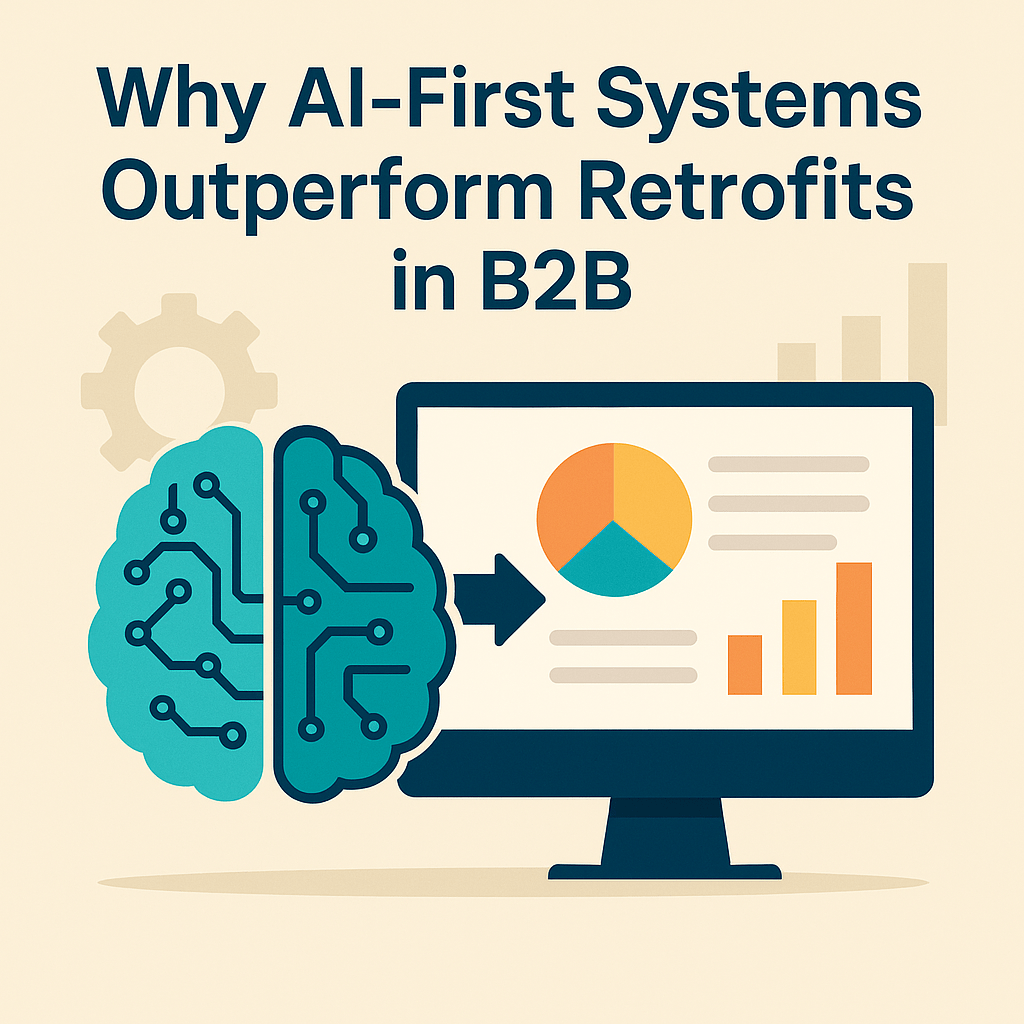Artificial intelligence is no longer optional in B2B. The question isn’t if companies will use it, but how. Many organizations are discovering a painful truth: simply bolting AI onto existing systems rarely delivers meaningful results. In fact, studies show that 95% of enterprise AI pilots fail to generate measurable business impact—most often because the tools were never designed for AI in the first place.
The key to success is adopting AI-first systems—platforms built from the ground up with intelligence at their core—rather than trying to force AI into outdated processes. Let’s explore why that distinction matters, and the challenges businesses need to overcome along the way.
1. Integration That Works Seamlessly
Retrofitted AI often lives on the side of workflows—creating extra steps and little adoption. AI-first systems, on the other hand, are designed to sit directly inside daily tasks. For example, an AI-first quoting platform doesn’t just suggest pricing—it’s architected so every quote, rule, and recommendation flows naturally through the sales process.
2. Data Quality Built Into the Design
When AI is layered onto old systems, it inherits their messy data: duplicates, stale records, and incomplete fields. That undermines predictions from day one. AI-first systems solve this by baking in data quality checks and validation pipelines from the ground up, ensuring clean inputs that lead to trustworthy outputs.
3. Reliability Over Hallucination
Generative AI is powerful but risky when added onto legacy tools—it can generate convincing but wrong results. AI-first platforms balance creativity with deterministic safeguards, verifying outputs against approved datasets, rules, and price books before surfacing them to users.
4. Compliance From the Start
Privacy and liability become much harder to retrofit. When AI is added after the fact, audit trails, governance, and oversight are usually patchwork. AI-first systems treat compliance as a first-class citizen, logging every decision and keeping humans in control where it matters most.
5. Scaling Without Fragility
Most bolt-on AI projects stall at pilot stage because legacy infrastructure wasn’t built to scale with AI workloads. AI-first systems are engineered with monitoring, resilience, and scalability in mind—so they grow with the business rather than collapse under pressure.
6. Real Value vs. AI-Washing
The market is crowded with vendors slapping “AI” onto old features that add little business value. By contrast, AI-first systems prove their worth with tangible outcomes—faster sales cycles, more accurate quotes, smoother compliance—not just buzzwords.
The Bigger Picture
The future of B2B AI won’t be won by companies retrofitting yesterday’s tools with today’s buzzwords. It will be defined by AI-first systems that are purpose-built for intelligence, automation, and adaptability.
Whether it’s through professional services that help architect these systems or AI-driven platforms like AgentCPQ, the message is clear: success comes from building on an AI-first foundation, not forcing AI into outdated structures.
Businesses that make this shift aren’t just experimenting with AI—they’re setting themselves up for durable, scalable impact.

